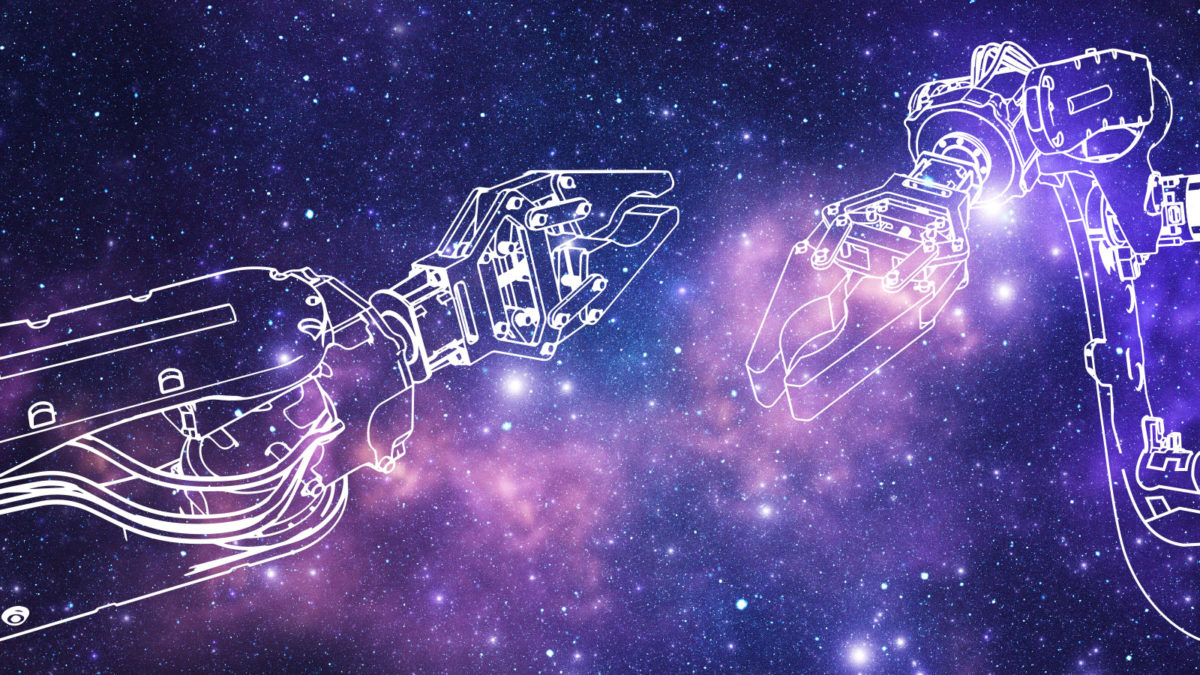Mission: Humanlike dexterity in space
By Keith Button|February 2022
★ Click at right to open this story’s Knowledge Guide entries.
★ Click star at right to open Knowledge Guide.
Satellite servicing is a hot topic in the space industry, but as far as the public record shows, no one yet has mastered the science of robotically fixing or refueling multimillion-dollar spacecraft. One piece of unsettled business is the need to compare the difficulty of grappling a satellite to the option of coasting alongside and touching only the component that needs fixing or refueling.
Testing the non-grapple method requires creating a robotic arm with incredible dexterity. That’s one of the challenges that a university and industry team led by Carnegie Mellon University in Pittsburgh will take up starting in March under a five-year, $5 million grant from the U.S. Air Force Research Laboratory.
Howie Choset, the Carnegie Mellon robotics professor leading the team, has set a big goal for the technology: refueling the James Webb Space Telescope should NASA decide to do so. Choset thinks the technology could be ready in 10 years, but NASA now estimates that Webb will have a propellant life of twice that following a highly accurate Ariane 5 orbital insertion and two midcourse correction maneuvers.
First, though, Choset and his team will examine two scenarios: Catching up to a satellite to grab it versus flying alongside and having a robot arm reach out and work on it. One of their goals is figuring out which scenario is more difficult.
Both are tricky. Flying alongside might work best for simpler tasks, such as inserting a new navigation system into a defunct satellite, a maneuver akin in terms of precision to a person inserting a key into a lock. We humans sometimes take our dexterity for granted, but that’s an act of “insane” precision involving our senses and muscles, Choset says. Now, imagine the task with a tumbling or spinning satellite as your target. That’s even trickier.
Grabbing the satellite might be necessary for more complicated repairs, but then there’s the concern that the robot might damage an exterior surface or just miss the mark and push the satellite out of orbit, losing it forever.
So, researchers plan to try versions of the “key in the lock” repair scenario in labs at Carnegie Mellon, Northrop Grumman in Virginia, and — potentially — the University of New Mexico. Each will mount a simulated satellite face to a robotic arm programmed to simulate the weightlessness of space by offering only slight resistance when pushed, for instance. Versions of robot arms will then try to repair the satellite faces. Meanwhile, Texas A&M researchers will work on the satellite-grabbing scenario.
Northrop Grumman has shown great interest in satellite servicing. A spacecraft it’s developing, the Mission Robotic Vehicle, targeted for launch in 2024, will be equipped with robotic arms from the U.S. Naval Research Lab and DARPA. MRV will be similar to the company’s existing Mission Extension Vehicle-1 and 2 spacecraft, currently attached to two geosynchronous satellites for propulsion and pointing control, Northrop Grumman says. The difference will be that the MRVs will have arms instead of the docking mechanisms on the MEVs that attach to each spacecraft’s liquid apogee engine.
On the AFRL project, Northrop Grumman and the other participants ultimately want to design arms with the dexterity to build structures in space. Components could be packed into smaller launch vehicles, and elaborate folding and unfolding wouldn’t be necessary, Choset says.








